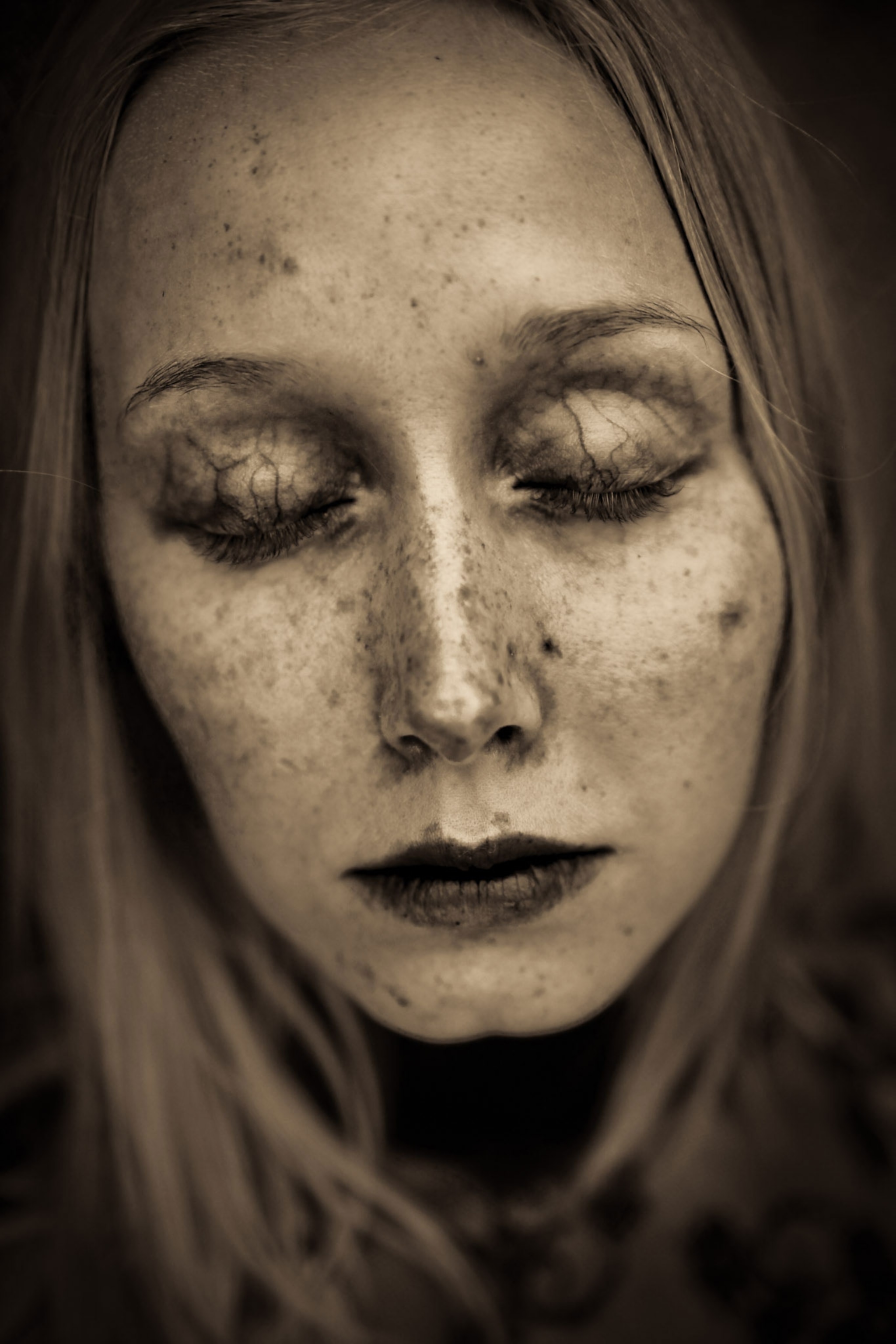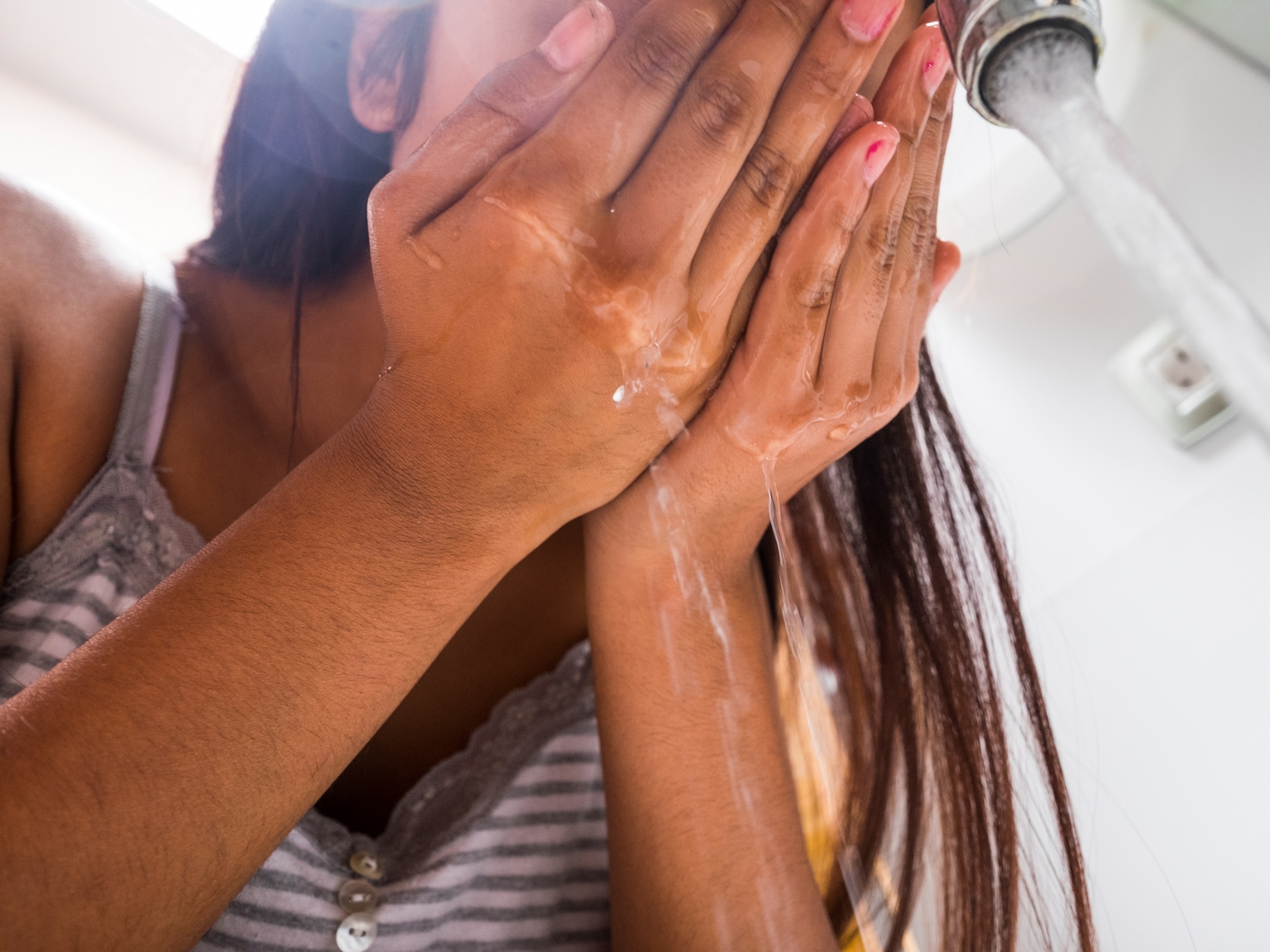
Gorgeous photos of freckles celebrate their unique beauty
Sometimes perceived as flaws, this antique method of photography brings the magic of freckles to life and highlights their beauty.
People have always been Fritz Liedtke’s favorite subjects. He was out to dinner several years ago when he was taken with one of his dining companions, a woman with “amazing freckles.” Liedtke asked if he could take her photograph, which he did under the light of a neon sign in front of the restaurant. “It was one of the most beautiful photographs I had taken all year,” he says of the moment that launched him on a search for more freckled faces to photograph.






Liedtke is interested in making beautiful images, and for him, freckles are beautiful. But, as we all know, beauty is subjective. Look up the word “freckle” in the thesaurus and you will get one or two sweet-sounding words in the list of synonyms, like “beauty mark” and “daisy.” But the majority are not sweet, such as “flaw,” “blotch,” and “mark.”
As Liedtke began talking with and photographing more friends and acquaintances who shared this prominent feature, he wasn’t surprised to discover that many held deep-rooted beliefs about this feature he found so captivating. One loved her freckles, recalling them being referred to by her parents as “angel kisses.” Another remembered as a child being asked by her grandmother to wash up for dinner after playing outside, then crying when her grandmother asked her to go wash again, having mistaken her freckles for dirt.
It was this story that formed the conceptual basis for Liedtke’s work—creating something beautiful from what some perceive as a flaw. “We spend so much time in our culture trying to make things look pretty and uniform in a particular way that the skin that shows off its texture isn’t shown that often. We’ve built a culture where having something different about yourself isn’t necessarily valued.”
But the narrative is only part of it. The real magic, the “wow” factor that takes your breath away, comes from the presentation, which elevates these portraits to a visually arresting level. “There’s a lot of emphasis in the photography world on conceptual work, which I appreciate,” he says. “But often times I think it’s really valuable to just enjoy something that is beautiful.”
Liedtke had a sense of the look he was going for—the tone that comes from antique processes like tintypes, where the blue-sensitive emulsion brings out oranges and reds, which puts textures of the skin in relief. He spent months playing around with tintypes as well as platinum and palladium printing. All the while, in the back of his mind, was something he had come across while studying printmaking in college—a process used by turn of the 19th century photographers like Edward Curtis and Alfred Stieglitz, called photogravure.
As soon as he saw the first print roll off the press during a weekend photogravure workshop, he knew his portraits had found their medium. From here, securing an artist’s residency gave him use of a printmaking studio with the necessary space and materials. Though he is by his own admission “not a process person,” photogravure is most definitely process-intensive. He gives a very thorough explanation here, but in short: A toned digital file is printed onto a film medium. This positive image is exposed onto a plate. The plate is engraved with the image through a development process. Once it is wiped with special inks, the plate is ready to be printed. Employing a process called “chin-colle,” Liedtke then places a piece of dampened translucent rice paper directly over the plate, sprinkles the back of it with wheat starch to make a glue, then places another piece of paper on top. This sandwich of sorts is run through the printing press, embossing and affixing the paper.
Not surprisingly, in this intensive, hands-on process “there are a hundred ways things can go wrong” as an image makes its way to the final print. But the result is stunning. The warm tone of the rice paper accentuates the skin tone while the white paper underneath creates a luminosity that is, well, celestial. Each print is unique and bears the marks of having been processed by hand, as beautifully imperfect and textured as the human face.
Liedtke named this collection of portraits Astra Velum, which means “veil of stars.” They exist as individual prints, as a boxed set, and as a handmade book. The photographs have also been exhibited in galleries, including twice in China. Liedtke recalls a moment a few years ago when a Chinese woman approached him after having seen his show and through a translator said, “I’ve never really thought of myself as beautiful. I have all these freckles. But now that I’ve seen these I think I probably am beautiful.”
“That’s the best payoff right there,” says Liedtke.
You can learn more about Astra Velum and Liedtke’s fine art projects here. His full professional portfolio can be accessed here.
Related Topics
You May Also Like
Go Further
Animals
- Octopuses have a lot of secrets. Can you guess 8 of them?
- Animals
- Feature
Octopuses have a lot of secrets. Can you guess 8 of them? - This biologist and her rescue dog help protect bears in the AndesThis biologist and her rescue dog help protect bears in the Andes
- An octopus invited this writer into her tank—and her secret worldAn octopus invited this writer into her tank—and her secret world
- Peace-loving bonobos are more aggressive than we thoughtPeace-loving bonobos are more aggressive than we thought
Environment
- Listen to 30 years of climate change transformed into haunting musicListen to 30 years of climate change transformed into haunting music
- This ancient society tried to stop El Niño—with child sacrificeThis ancient society tried to stop El Niño—with child sacrifice
- U.S. plans to clean its drinking water. What does that mean?U.S. plans to clean its drinking water. What does that mean?
- Food systems: supporting the triangle of food security, Video Story
- Paid Content
Food systems: supporting the triangle of food security - Will we ever solve the mystery of the Mima mounds?Will we ever solve the mystery of the Mima mounds?
History & Culture
- Strange clues in a Maya temple reveal a fiery political dramaStrange clues in a Maya temple reveal a fiery political drama
- How technology is revealing secrets in these ancient scrollsHow technology is revealing secrets in these ancient scrolls
- Pilgrimages aren’t just spiritual anymore. They’re a workout.Pilgrimages aren’t just spiritual anymore. They’re a workout.
- This ancient society tried to stop El Niño—with child sacrificeThis ancient society tried to stop El Niño—with child sacrifice
- This ancient cure was just revived in a lab. Does it work?This ancient cure was just revived in a lab. Does it work?
Science
- The unexpected health benefits of Ozempic and MounjaroThe unexpected health benefits of Ozempic and Mounjaro
- Do you have an inner monologue? Here’s what it reveals about you.Do you have an inner monologue? Here’s what it reveals about you.
- Jupiter’s volcanic moon Io has been erupting for billions of yearsJupiter’s volcanic moon Io has been erupting for billions of years
- This 80-foot-long sea monster was the killer whale of its timeThis 80-foot-long sea monster was the killer whale of its time
Travel
- Spend a night at the museum at these 7 spots around the worldSpend a night at the museum at these 7 spots around the world
- How nanobreweries are shaking up Portland's beer sceneHow nanobreweries are shaking up Portland's beer scene
- How to plan an epic summer trip to a national parkHow to plan an epic summer trip to a national park
- This town is the Alps' first European Capital of CultureThis town is the Alps' first European Capital of Culture




